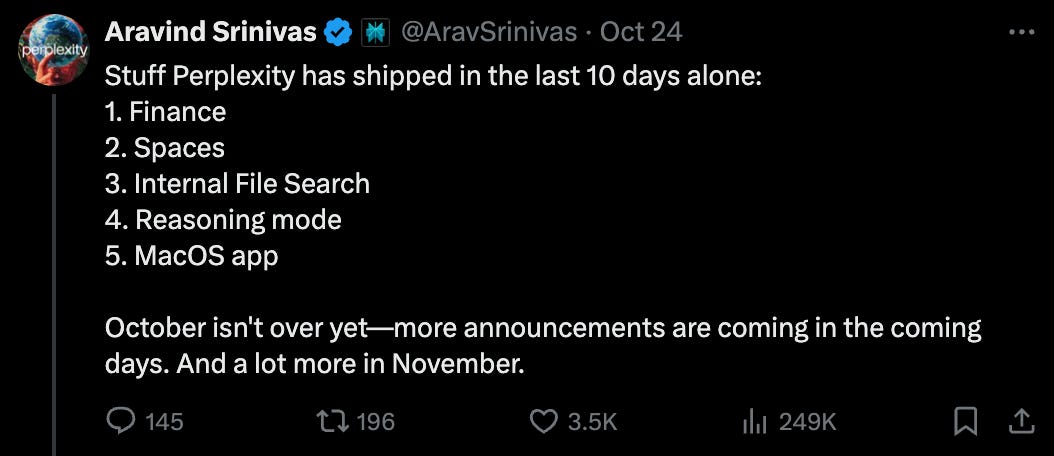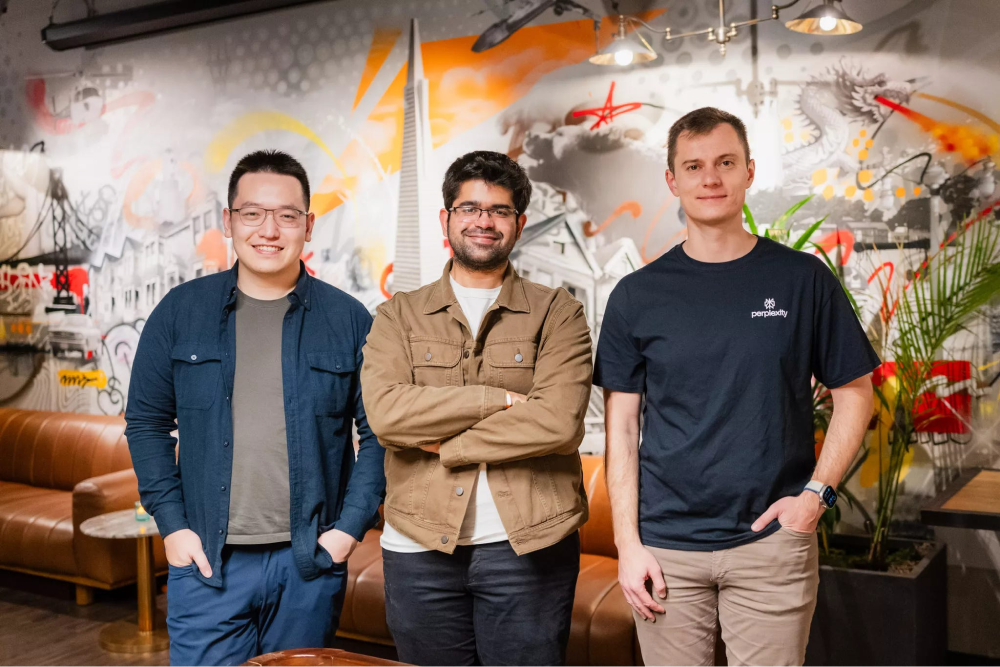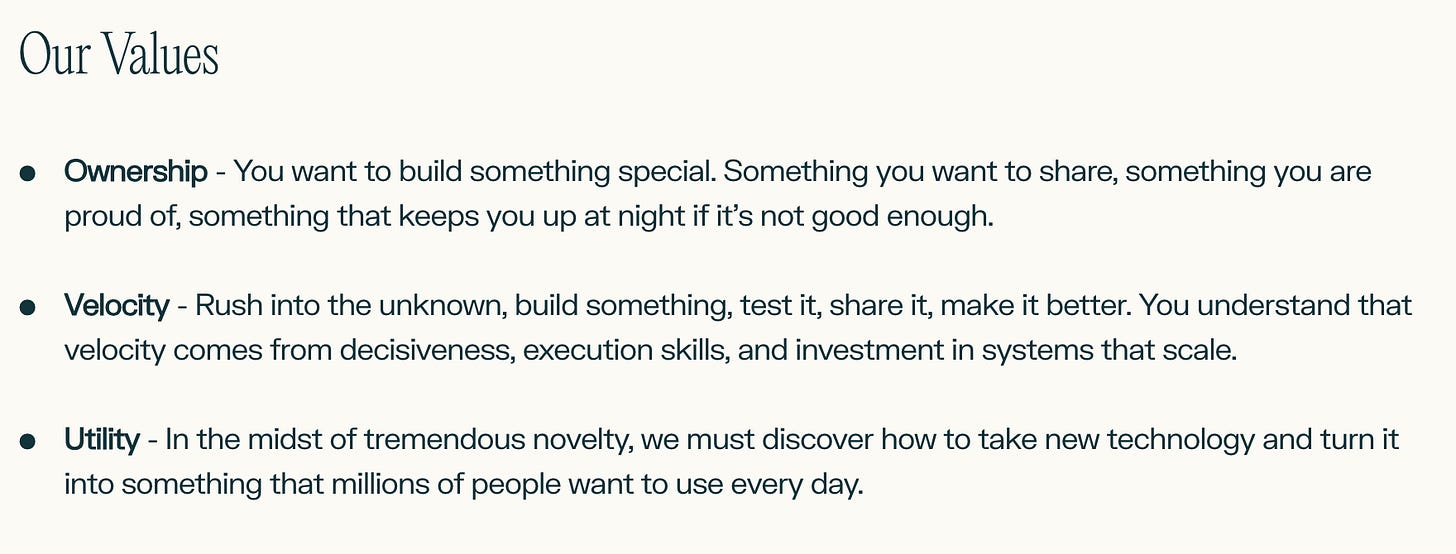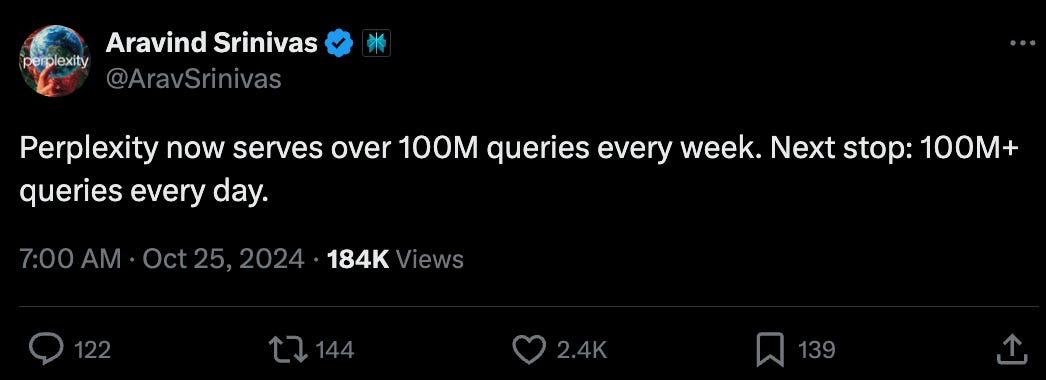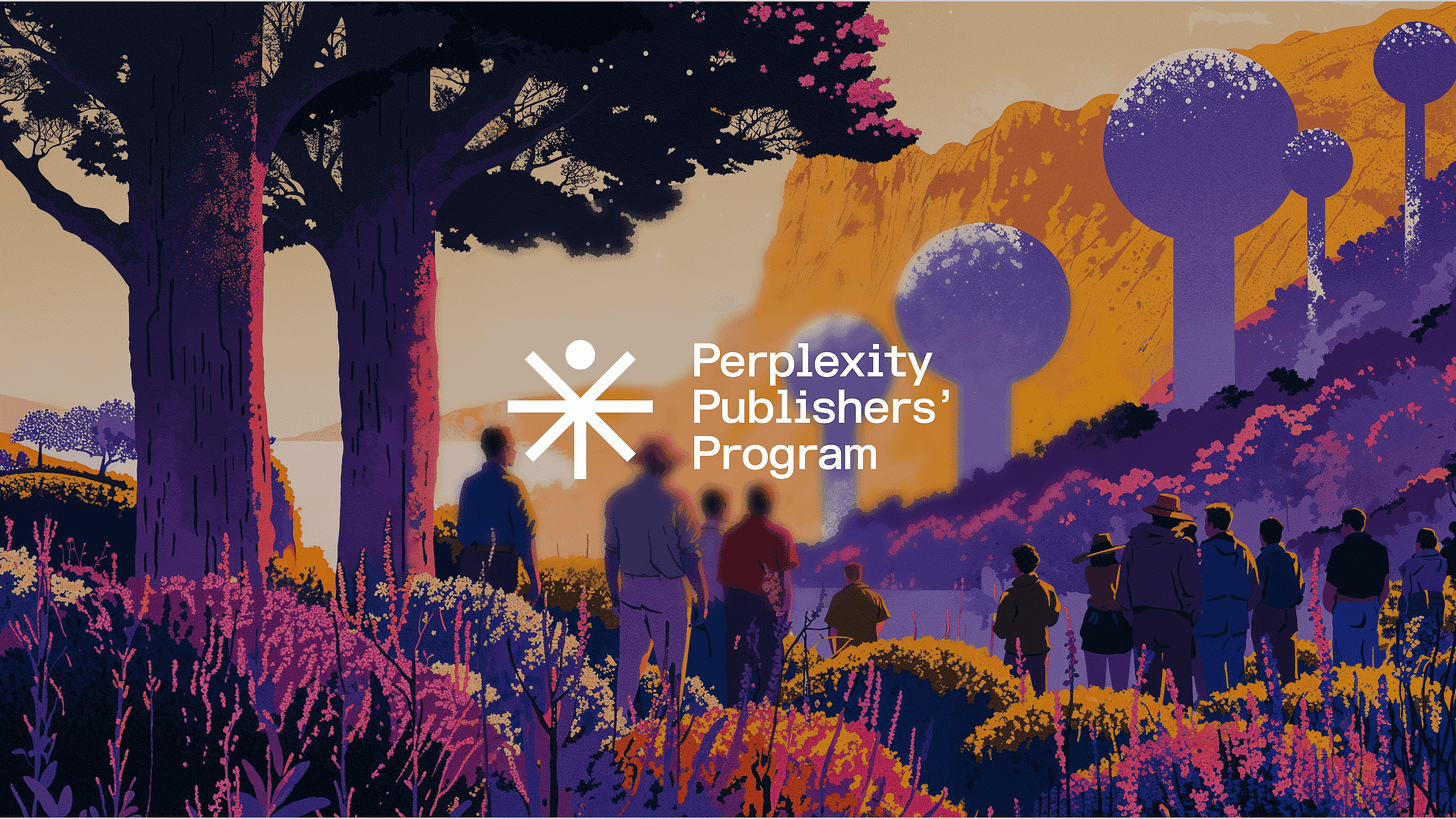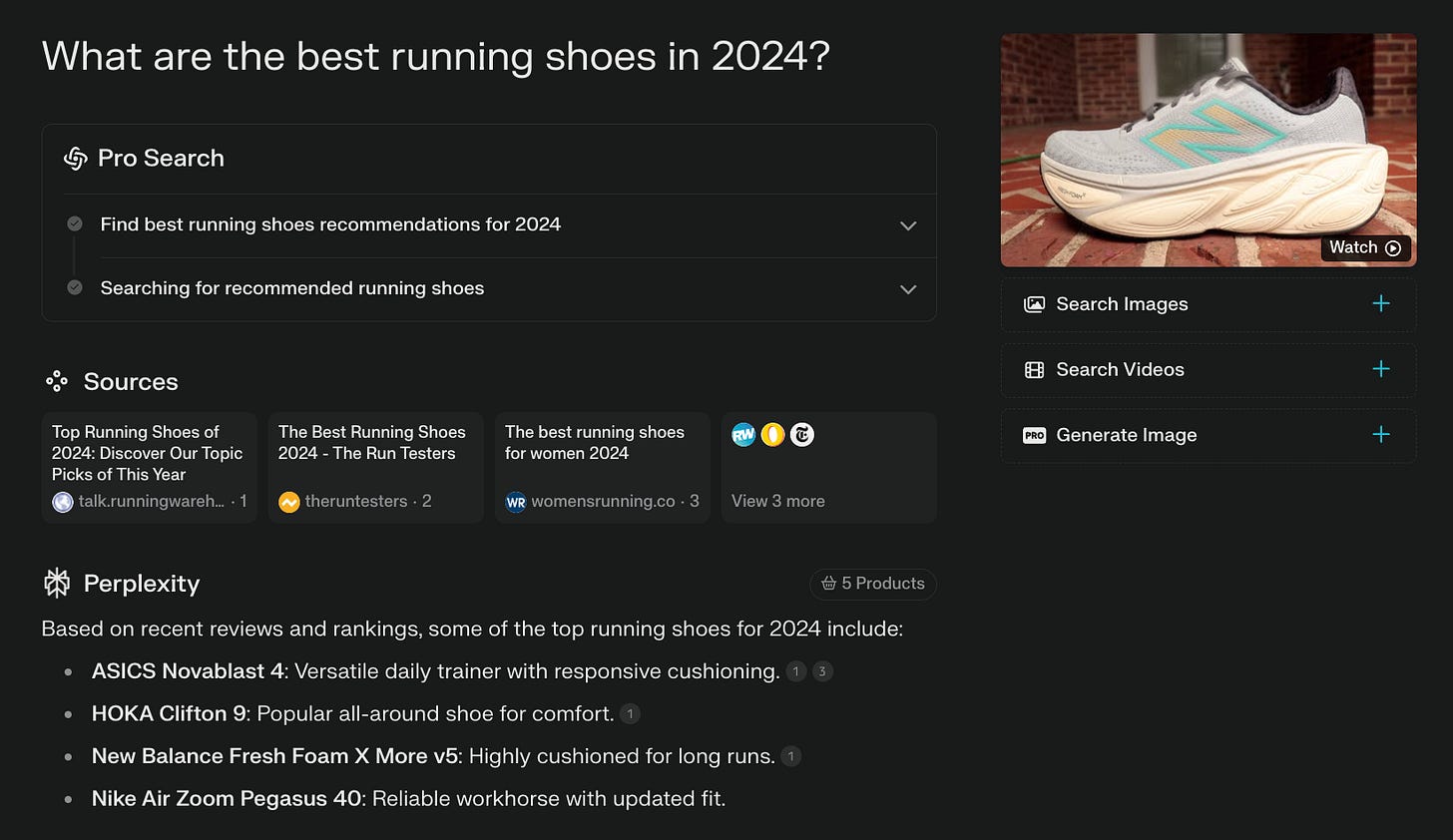Inside How Perplexity is Disrupting Google Search | Aravind Srinivas
The secrets behind Perplexity's incredible shipping velocity and focus. Plus how it plans to deliver better ads than Google's 10 blue links.
Dear subscribers,
Today, I want to share a new episode with Aravind Srinivas.
Aravind is the CEO of Perplexity, the AI answer engine disrupting online search. He gave me an inside look at how Perplexity builds products, how it scaled to 100M queries a week, and how it’ll deliver better ads than Google’s ten blue links.
Watch now on YouTube, Apple, and Spotify.
Brought to you by:
Product Faculty—There’s <12 hours left to sign up for Miqdad Jaffer (OpenAI)’s #1 rated AI PM course. I took it myself and learned a ton. Get $250 off now.
Aravind and I talked about:
(00:00) Perplexity doesn’t do product reviews
(01:22) The secret to Perplexity's incredible shipping velocity
(05:16) Giving feedback as a user, not the CEO
(07:01) How Perplexity picks what to build next
(10:56) Perplexity's "7 friends in 10 days" metric
(14:02) How Perplexity uses AI to build Perplexity
(17:30) How to get a great job without traditional credentials
(21:50) Drivers behind Perplexity's growth to 100M queries
(27:50) The future of search ads and why 10 blue links are dead
(35:56) Closing advice to get what you want out of life
Read on for the takeaways.
Inside Perplexity’s incredible shipping velocity
Welcome Aravind! So you’re a 100-person startup challenging Google Search. In the last 10 days alone, you shipped half a dozen new features. What’s the secret to shipping so fast while maintaining quality?
Our speed comes from our culture. Since the beginning, we've operated with a high sense of urgency. This flows from the top down to every person in the company.
Every week is 2% of the year. If you don't ship this week, you've lost 2% of the year. Four weeks means losing 10%.
We motivate employees to get features running for internal testing first. We tell teams: ”Get your first users from within Perplexity. If employees are excited about your feature and there's some virality, it'll likely be an external success too.”
How do you get product teams to move fast?
Big companies struggle because more people create overhead, bureaucracy, and communication gaps.
At Perplexity, we try to make our teams independent. Each team has a PM, designer, and engineers (frontend, backend, AI, search) that can operate separately from other teams.
Of course, we still share learnings between teams but we try to reduce the dependencies as much as possible.
Honestly, it feels like you’re shipping products faster than it takes for Google to push a document from one executive to another. Do you have a product review process?
We don't do product review meetings. My mentality is:
Why wait for a review meeting? Just give me the link to try the product now so I can give feedback.
Then, I'll check again in a few days and give you new feedback. This is much faster than spending half a week preparing for a meeting with me.
Also, I'm not giving feedback as an executive but as a user.
That feedback is more genuine. The products we build at Perplexity are meant for all users, including me. I do several dozen queries daily, so I can easily give feedback on almost anything we build. But I see people on X who use it even more than me, which motivates me to use it more.
How Perplexity decides what to build next
Focus is so important for startups. How do you and the team decide what to build next?
We prioritize based on our most important metric:
Daily queries
When we first started, we were at 3,000 queries. Now, we're at about 16M queries per day. Getting to 100M queries is our next milestone; from there, hitting a billion queries would be a true success. Nothing else really matters.
How do you grow daily queries?
Well, you can’t game this metric. You need both user growth and retention. You could have a billion app installs, but you won't get queries if nobody uses it. You need new users, too, because most users only ask around 6-7 questions daily.
Can you share how products you’ve shipped have directly grown this metric?
Sure, we look at first-order and second-order effects to grow daily queries.
For example, auto-suggest is first-order because it helps people ask questions faster. Related questions at the bottom of answers are second-order because they inspire follow-up questions, even if users don't click the links directly.
Speed is also an important feature.
When people get answers quickly, they use the product more.
Do you have an early signal of user retention like Facebook’s “7 friends in 10 days” metric?
Not quite, but it's all about giving new users good answers for those first few queries. We track our new user funnel very closely - how many people go from one question to two, from two to five, five to ten, and so on.
Once someone hits about 100 queries, they rarely leave.
But it all comes down to accuracy, latency, and readability. You can't have slow answers, inaccurate information, or walls of text. I'll tell you the same three dimensions even a year from now.
Finally, the product must be reliable — it must stay up and running consistently.
How do you measure answer accuracy? That seems like a hard one.
One signal is whether follow-up questions clarify the same thing or move to new topics. Another signal is to use more advanced AI models to analyze queries, sources, and answers. This is expensive — you can't do it for millions of prompts daily. However, you can sample and use larger models with more context to verify accuracy.
How does your product team use AI and Perplexity internally to build Perplexity?
Many of our engineers use coding tools like GitHub Copilot or Cursor because they're integrated into the editor. There's clear productivity improvement there.
We also use ChatGPT for writing and, of course, Perplexity for analysis and research.
How to land a job at a fast-growing startup like Perplexity
When you’re hiring talent, what do you look for beyond brand names like ex-Google?
Being ex-Google was great 8-10 years ago, but not anymore. Google’s hiring process was very strict, and just getting in and doing well mattered because they were still shipping a lot back then.
Now, it's different because they've hired so many people. The hiring bar naturally had to adjust — if the world had 500,000 amazing engineers, that would be great, but that's not reality. So instead:
We look for people with high potential who haven't had their big break yet.
We hope Perplexity can be that career step. We're happy if we can produce engineers who go on to do amazing things outside Perplexity. Ideally, they'll start new companies if we do well enough that they have that freedom.
Beyond potential, we look at track record - not where you worked, but what you did in those places. That matters even if you were at a failed startup but did substantial work. The startup may have failed because the idea was wrong, not because you didn't work hard. You've gained the willpower and determination to succeed — you just need your victory.
It seems like people who have a chip on their shoulder could make good hires.
Exactly. One of my investors, Elad Gil, told me this when I was critical of a candidate who talked a lot about past achievements. He said:
In life, most people have zero hits. Some people have one amazing hit. Extremely few people have more than one hit.
That's why people respect entrepreneurs who've started multiple successful companies. Even if you succeed once, there's no guarantee you can hire great people and raise funding for the second one. Having a chip on your shoulder means you're still hungry for that big hit.
How Perplexity scaled to 100M queries
Let's talk about how Perplexity scaled to 100 million queries weekly. Is it mainly through word of mouth and people comparing it to Google?
X/Twitter has been one of our biggest growth drivers, no question. LinkedIn has been good, too, though more professional. We also see growth through:
Email newsletters to users about new features
Users sharing permalink answers via WhatsApp and iMessage
Natural virality when someone drops a Perplexity link in a group chat
People can run four pro searches every 4 hours on the free tier. That seems pretty generous — does it hurt paid upgrades?
Our focus is on queries, users, and usage.
People who use Perplexity as part of their daily habit are less likely to switch, even when someone like ChatGPT offers the same features. But when people pay purely for utility, and a bigger brand offers it free, they will churn - that's historically proven.
We'll figure out monetization later. Right now, we're focused single-mindedly on user growth and query growth.
But the subscription plan is doing well, right? Millions are paying for it?
But we've proven there's a market. Google is now considering a paid version of search, which validates our business model.
We've found people will pay for accurate, unbiased, fast answers. Sure, getting millions to pay $200 annually is just a $2 billion business — tiny compared to Google's $200 billion. But look at companies like Databricks and Snowflake - they make $2-3 billion annually with 7,000-10,000 employees.
When you always compare it to Google, everything feels small. But compared to other public companies, it's a significant outcome for any venture-backed business. The upside could be even better if we figure out monetization beyond subscriptions.
Delivering better search ads than 10 blue links
Google search has degraded with sponsored links and terrible mobile web experiences. How will you deliver better ads?
The core problem comes from making the ad unit a link.
When your UI is ranked links, you have to corrupt that order with sponsored ads either at the top, middle, or bottom. Ads at the bottom get few clicks, leading to lower revenue and stock price pressure. So, you must put more ads at the top to grow ad click-through rates and revenue.
Our approach is different. We want to make the ad unit a question at the bottom of an answer. For example, if someone asks about running shoes:
We give an unbiased answer about different shoes first.
Brands like Nike or On can sponsor follow-up questions below, like “What makes On shoes comfortable?”
Users click on these questions, and the brand can then fulfill the purchase through product catalog answers.
This is more efficient than paying for a link at the top of search results. You can target the right user intent without corrupting the experience while maintaining ad ROI. Of course, this is just our hypothesis; we still have to prove that it works.
Are enough people clicking on Perplexity’s follow-up questions for this to work?
It's significant enough that we're confident betting on this as an ad unit.
Taking your shoe example, Google requires clicking links and signing up for accounts to buy things. If everything is part of Perplexity's UX, there's less friction.
Exactly. We see this with Meta, too - you discover a brand on Instagram but go to Google to search for it and buy through their referral. Google never generated the demand but claims credit for fulfilling it.
Demand fulfillment is where ad budgets and ROI are highest. We can streamline this by enabling transactions natively where users first discover brands. This could:
Make the experience smoother
Keep advertisers on our platform
Balance unbiased answers with brand opportunities
Now, you may be wondering why Google doesn’t just do this. I bet the margins would be significantly lower than their current advertising business. When you see Google's stock rising, it's more due to ads and sales teams than their consumer product team. This creates an opportunity to build a more consumer-friendly experience.
You probably have a good shot because of Google’s bureaucracy dilemma - they have 100,000 employees and won't blow up their ad model overnight.
You can see it in the DOJ antitrust documents - Google spends $8 billion on search infra and payroll compared to $11-12 billion on ads infrastructure and payroll. They spend 40-50% more yearly on ads than improving their core product. Looking at where money is spent reveals true intent.
Advice for people looking to build something great
As we wrap up, what advice do you have for people working in tech or students trying to achieve something like you have?
It may feel like boring advice, but there’s no substitute for hard work.
The secret to working hard is picking something you enjoy, where work doesn't feel like work. You'll naturally put in more hours because it feels like your life's work.
Don't give up until you're forced to. There will be plenty of moments when people tell you it's not worth doing. But Jensen Huang told me:
If something wasn't difficult, it probably wasn't worth doing.
When trying to bring something new into the world that goes against existing structures, succeeding probably means you changed things meaningfully.
Thank you Aravind! If you enjoyed this interview, follow Aravind on X and check out my guide on how to get the most out of Perplexity.



